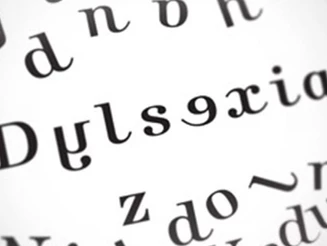Learning disabilities encompass a variety of neurologically-based problems in processing information Dyslexia, “the most common cause of reading, writing, and spelling difficulties,” is a language-based learning disability that affects reading and related language-based processing skills.(1) Students with dyslexia will understandably struggle more than the average in 1 understanding and completing daily school activities and assignments. While the severity of dyslexia varies on an individual basis, affectedstudents are certainly eligible for an evaluation under the Individuals with Disabilities EducationAct (IDEA), in order to determine whether they require special education services, and then what type will best accommodate them. Dyslexia is a specific learning disability that is covered by the IDEA, despite the different ways that schools in various states may define and address it.
Students with dyslexia often struggle to spell correctly, read at a normal pace, pronounce certain words, and decode the order of letters or mathematics computations.(2) While they might 2 show full comprehension of a text after hearing it read aloud, they often fall short in comprehending the same text after reading it silently to themselves. Additionally, these students often struggle to improve their handwriting, another academic skill that is fundamental. In essence, the brain of a person with dyslexia is wired differently than people without language-based learning disabilities. This is not at all correlated with the person’s intelligence or academic competence; however it does create serious obstacles to a student’s experience in school. Without special education interventions, it is clear that students with dyslexia do not receive a Free and Appropriate Public Education (FAPE) as it is guaranteed under the law.
The earliest intervention that schools across the country implement in addressing dyslexia in students is screening and identification of affected students in Kindergarten through Grade 3. Additionally, teachers receive educational training and professional development in how to properly teach a student with dyslexia.(3) While these are important first steps in creating an 3 educational program for a student with dyslexia, the process must not stop here. Studies have found that these early screenings and predictive methods are limited in providing necessary services for affected students, as it is very difficult to make accurate predictions regarding the literacy outcomes of an individual.(4) Schools must also employ evidence-based interventions that 4 will accommodate students with dyslexia.
In order to be effective, these interventions must be “systematic, well structured and multi-sensory,” and must also “incorporate direct teaching, learning and time for consolidation, with frequent revision.” This means that professionals need a thorough understanding of the 5 interventions available to them, and their suitability for different students. Analytical reports on interventions for language and literacy difficulties conclude that for dyslexia, “effective interventions should include training in letter sounds, phoneme awareness, and linking letters and phonemes through writing and reading from texts at the appropriate level to reinforce emergent skills.” However, because dyslexia varies from student to student, interventions must be 6 specialized to meet each students needs. Some affected students might benefit from training in oral language skills such as vocabulary pronunciation; others, meanwhile, may require a mixed approach.
To be more specific, there are a number of reading programs that are designed to help students with language-based learning disabilities like dyslexia. Many are based on an approach called Orton-Gillingham, which was “the first teaching approach specifically designed to help struggling readers by explicitly teaching the connections between letters and sounds.” Programs 7 that employ the Orton-Gillingham approach will teach students specific skills that involve letters and sounds, and then build on these skills over time. Additionally, these programs will implement a multi-sensory approach to teaching reading, in which they utilize sight, hearing, touch, and movement to help students connect vernacular language with letters and words. Other programs that have been influenced by the Orton-Gillingham approach include the Barton Reading Program and the Wilson Reading System.
Schools can incorporate these reading programs into a student’s academic experience as part of their Individualized Educational Program (IEP), for example. Whatever approach is employed, in order to be effective it must be tailored to each student with dyslexia on an individual basis. Depending on the state, schools often push back against long-term IEPs, and may try to define dyslexia such that it won’t be covered under the IDEA. Nonetheless, students with dyslexia are eligible for an evaluation and, more often than not, an intervention program. Progress in improving one’s language and literacy ability is unlikely to be consistent or linear, and schools must be ready to adjust and maintain the student’s IEP as needed.
1.) Pierson, J.M., “Frequently Asked Questions.” DyslexiaHelp.umich.edu. University of Michigan. 15 April 2011.
2.) Learning Disabilities Association of America, “Dyslexia: Affects reading and related language-based processing skills.” LDAAmerica.org. 2 September 2013.
3.) Morin, A. “Dyslexia Laws: What They Are and How They Work.” Understood.org. 7 August 2015.
4.) Snowling, M.J. “Early identification and interventions for dyslexia: a contemporary view.” Europe PMC Funders Group. 1 January 2013.
5.) Snowling, M.J. “Early identification and interventions for dyslexia: a contemporary view.” Europe PMC Funders Group. January 2013.
6.) Snowling, M.J. “Early identification and interventions for dyslexia: a contemporary view.” Europe PMC Funders Group. January 2013.
7.) Rosen, P. “Orton Gillingham: What You Need to Know.” Understood.org. 24 December 2014.

